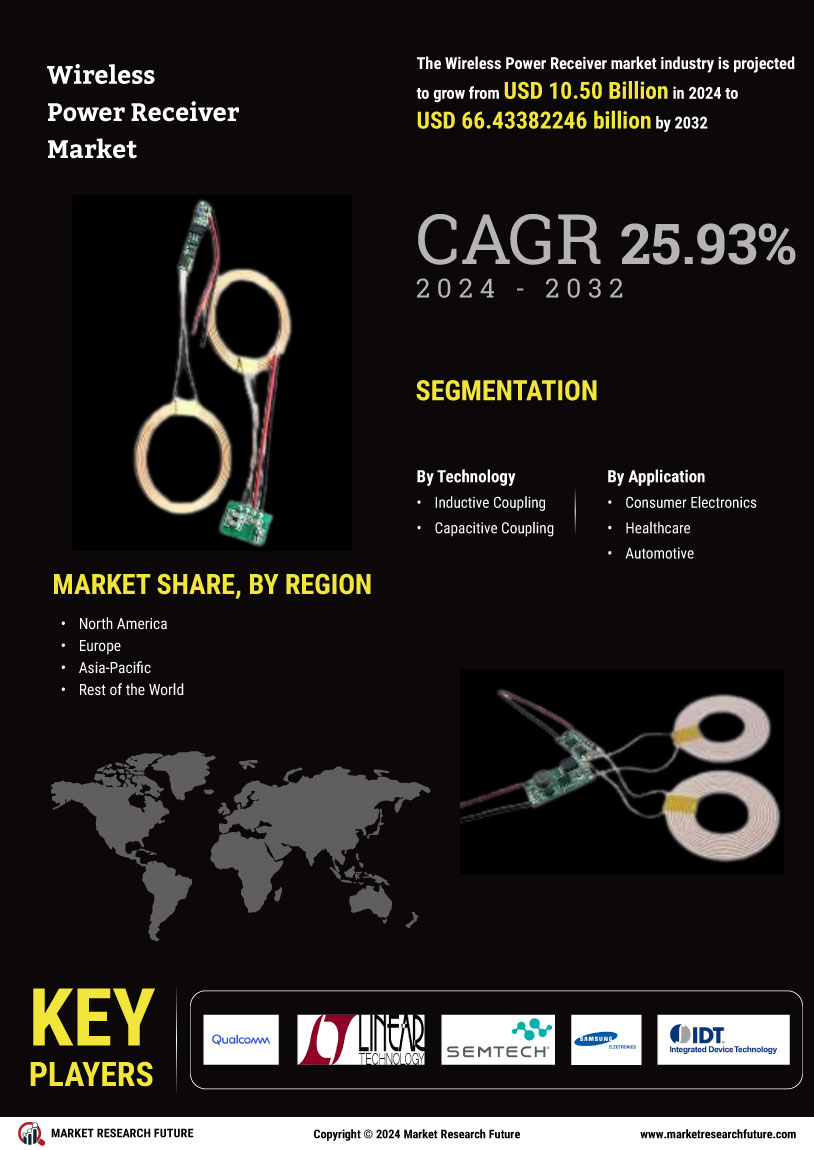Advancements in Healthcare Technology
The Wireless Power Receiver Market is benefiting from advancements in healthcare technology, particularly in the realm of medical devices. The increasing reliance on portable and wearable health monitoring devices necessitates efficient power solutions. Wireless power receivers are being utilized in devices such as pacemakers, insulin pumps, and health trackers, allowing for continuous operation without the need for frequent battery replacements. The healthcare sector is projected to invest heavily in wireless charging technologies, with estimates suggesting a market growth of over 15% annually through 2028. This trend underscores the critical role of wireless power receivers in enhancing patient care and device functionality.
Integration with Smart Home Technologies
The Wireless Power Receiver Market is witnessing a significant integration of wireless power technology with smart home devices. As the Internet of Things (IoT) continues to expand, the demand for seamless connectivity and power solutions is increasing. Wireless power receivers are being embedded in smart home appliances, such as smart speakers, security systems, and home automation devices, facilitating a more streamlined user experience. This integration not only enhances the functionality of smart devices but also promotes energy efficiency. Market analysts suggest that the smart home segment could account for over 40% of the wireless power receiver market by 2027, indicating a robust growth trajectory.
Rising Demand for Wireless Charging Solutions
The Wireless Power Receiver Market is experiencing a notable surge in demand for wireless charging solutions, driven by the increasing proliferation of portable electronic devices. As consumers seek convenience and efficiency, the adoption of wireless charging technology in smartphones, tablets, and wearables is becoming more prevalent. According to recent data, the market for wireless charging is projected to reach USD 30 billion by 2026, indicating a compound annual growth rate of approximately 25%. This trend is further fueled by advancements in charging efficiency and the integration of wireless power receivers in various consumer electronics, enhancing user experience and driving market growth.
Growth in Electric Vehicle Charging Infrastructure
The Wireless Power Receiver Market is poised for growth due to the expansion of electric vehicle (EV) charging infrastructure. As governments and private sectors invest in EV technology, the need for efficient and convenient charging solutions is becoming paramount. Wireless power receivers are being developed for use in EV charging stations, allowing for hassle-free charging experiences. Recent estimates indicate that the EV market is expected to grow at a CAGR of 22% through 2030, which will likely drive the demand for wireless charging solutions. This trend not only supports the transition to sustainable transportation but also positions wireless power technology as a key player in the automotive sector.
Emergence of Standardization in Wireless Charging Technologies
The Wireless Power Receiver Market is experiencing a shift towards standardization in wireless charging technologies, which is likely to enhance market growth. As various industries adopt wireless power solutions, the establishment of universal standards is becoming increasingly important. This standardization facilitates interoperability among devices, making it easier for consumers to adopt wireless charging solutions across different platforms. Industry expert's indicate that the move towards standardized wireless charging could potentially increase market penetration by up to 30% by 2026. This trend not only simplifies the user experience but also encourages manufacturers to invest in wireless power receiver technologies, further driving market expansion.
















Leave a Comment